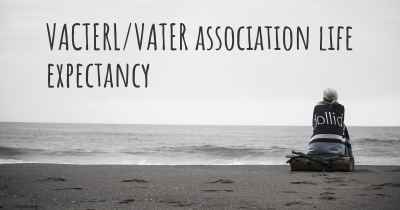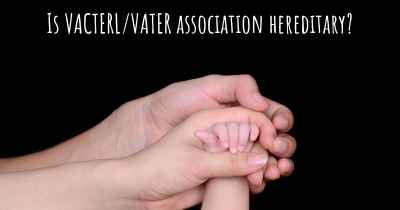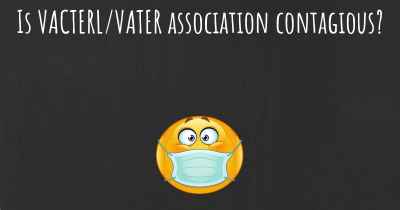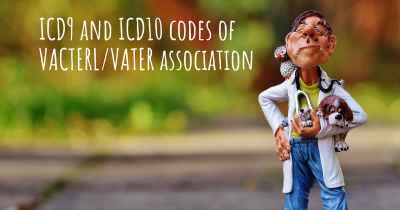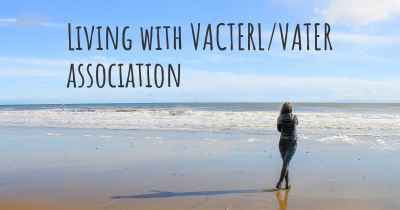Which are the symptoms of VACTERL/VATER association?
See the worst symptoms of affected by VACTERL/VATER association here
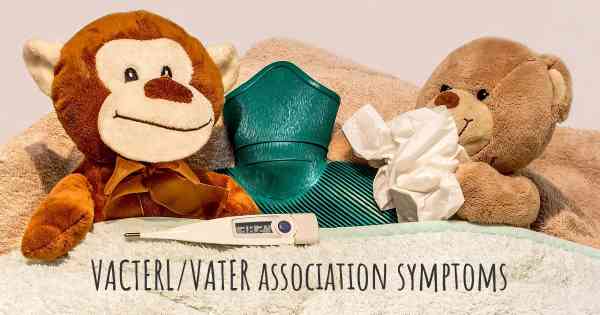
Symptoms of VACTERL/VATER Association
VACTERL/VATER association is a rare congenital disorder that affects multiple organ systems in the body. The term VACTERL stands for vertebral defects, anal atresia, cardiac defects, tracheoesophageal fistula, renal anomalies, and limb abnormalities. VATER is an acronym for vertebral defects, anal atresia, tracheoesophageal fistula with esophageal atresia, and radial and renal dysplasia.
Vertebral Defects: One of the key features of VACTERL/VATER association is the presence of vertebral defects. These defects can range from mild abnormalities in the shape or fusion of the vertebrae to more severe conditions such as hemivertebrae or missing vertebrae. These spinal abnormalities can lead to issues with spinal stability and may cause problems with mobility and posture.
Anal Atresia: Another common symptom of VACTERL/VATER association is anal atresia, which is the absence or blockage of the anal opening. This condition can range from a partial blockage to a complete absence of the anus. It often requires surgical intervention to create an opening and allow for normal bowel movements.
Cardiac Defects: Many individuals with VACTERL/VATER association have congenital heart defects. These can include abnormalities in the structure or function of the heart, such as ventricular septal defects (holes in the heart), atrial septal defects (abnormal openings between the heart chambers), or abnormalities in the heart valves. These cardiac defects can vary in severity and may require medical or surgical intervention.
Tracheoesophageal Fistula: Tracheoesophageal fistula (TEF) is a condition where there is an abnormal connection between the trachea (windpipe) and the esophagus (food pipe). In VACTERL/VATER association, TEF is often associated with esophageal atresia, which is the incomplete development of the esophagus. This can lead to difficulties in swallowing, breathing, and feeding, and usually requires surgical correction.
Renal Anomalies: Renal anomalies, or abnormalities in the kidneys, are commonly seen in individuals with VACTERL/VATER association. These anomalies can include kidney malformations, such as horseshoe kidney (where the two kidneys are fused together), renal agenesis (absence of one or both kidneys), or renal dysplasia (abnormal development of the kidneys). These kidney abnormalities can affect kidney function and may require medical management or surgical intervention.
Limb Abnormalities: Limb abnormalities are another characteristic feature of VACTERL/VATER association. These can include missing or underdeveloped limbs, extra fingers or toes (polydactyly), fused fingers or toes (syndactyly), or abnormalities in the bones or joints of the limbs. The severity of limb abnormalities can vary widely, ranging from mild to severe.
It is important to note that not all individuals with VACTERL/VATER association will have all of these symptoms. The presence and severity of each symptom can vary from person to person. Additionally, there may be other associated features or anomalies that are not included in the VACTERL/VATER acronym.
Diagnosis of VACTERL/VATER association is typically made based on the presence of at least three of the characteristic features mentioned above. Genetic testing may also be performed to identify any underlying genetic abnormalities that contribute to the condition.
Management of VACTERL/VATER association involves a multidisciplinary approach, with treatment tailored to the specific needs of each individual. This may involve surgical interventions to correct anatomical abnormalities, medical management of associated conditions, and ongoing monitoring and support for developmental and functional needs.
